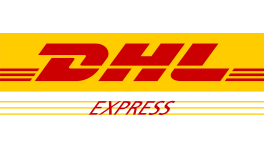A multi-vendor eCommerce marketplace is a platform that connects sellers with buyers. It is also known as a collaborative eCommerce model or vendor-centric eCommerce. When it comes to selling products, businesses can choose from multiple different options. These include selling on your website, selling through social media sites like Facebook and Instagram, or joining an online marketplace such as eBay or an ictVEND multi-vendor platform. Each of these options has its pros and cons, but which one is the best for you? Let’s take a closer look at each of the different multi vendor eCommerce marketplace types and see which one makes the most sense for your business.
What Is a Multi-Vendor eCommerce Marketplace?

When you sell your products on an e-commerce platform, you’re essentially setting up a vendor account. You upload your listings and detailed product information for that retail site, and then shoppers can find your products among all the other vendors selling similar items.
This is called a vendor-vendee model. A multi-vendor ecommerce marketplace has a different structure from a typical ecommerce site. It is almost like a wholesaler where multiple sellers come together to sell their products under one roof. The key difference is that both the vendors and customers are individual businesses rather than individuals with separate accounts on the same site.
Multi-Vendor eCommerce Marketplace Types
When it comes to multi-vendor eCommerce marketplaces, there are two main types: seller-to-business (SMB) and vendor-to-business (VTB) marketplaces. In an SMB marketplace, sellers are responsible for fulfilling all orders placed in their store. In a VTB marketplace, the vendor takes responsibility for fulfilling all orders. This means that if you have a VTB eCommerce marketplace, your products will be sent directly from the vendor, so you won’t have to worry about shipping. There are also some differences in pricing models.
For example, VTB marketplaces tend to have a subscription-based pricing model, while SMB marketplaces often have an a la carte pricing model. Now that we’ve taken a closer look at the types of multi vendor eCommerce marketplaces, let’s take a closer look at why you might want to sell on one of these platforms.
Why Sell on a Multi-Vendor eCommerce Platform?
One of the main benefits of selling on a multi vendor marketplace is that you can tap into an existing audience. This means that you don’t have to spend money on marketing and bringing new customers to your site. Instead, you can get your products in front of an existing audience of buyers. This can help you significantly grow your sales.
Another benefit is that most multi vendor marketplaces have a very wide variety of products. This means that you have a larger selection of products to choose from when deciding what to sell in your store. This can help you make sure that you have the products that your customers are looking for. Finally, selling on a multi-vendor marketplace means that you can save money on things like inventory and staffing. This means that you’re not only selling more products, but you’re also saving money along the way.
Seller-to-Business (SMB) Ecommerce Marketplace

SMB marketplaces are designed for individuals and small businesses who want to sell their products on a marketplace. This means that you’ll be selling your products directly from your website. However, you’ll be selling them on an existing marketplace. This helps you access an existing audience without having to build out your website from scratch.
However, there are some downsides to selling on an SMB marketplace. For example, you may not be able to customize your store like you would on a VTB marketplace. This may mean that you can’t add your branding or that you can’t add your product descriptions. This can make it harder for you to stand out among the competition.
Vendor-to-Business (VTB) Ecommerce Marketplace
VTB marketplaces are designed for big brands looking to sell their products directly to consumers. For example, if you sell shoes, you may want to sell your shoes directly to consumers. However, instead of building out your website, you can sell your products on a VTB eCommerce marketplace. This can help you streamline your business and save money on things like inventory and staffing.
Each VTB marketplace is different, so you’ll want to read the fine print and make sure that you understand the terms of service before you decide to sell on one of these marketplaces. Now that we’ve taken a closer look at what a VTB eCommerce marketplace is, let’s take a look at the Vendor Supply Co. Ltd. platform.
Vendorsupp Co. Ltd. Multi-vendor Platform
The Vendor Supply Co. Ltd. platform is a VTB eCommerce marketplace that focuses on merchandising and logistics. This means that you’ll be able to sell your products directly to consumers, and vendors will be responsible for the logistics behind getting your products to your customers. This includes everything from processing and fulfilling orders to shipping and managing returns. This is great if you don’t want to deal with inventory and fulfillment.
The Vendor Supply Co. Ltd. marketplace has a wide variety of products, including consumer goods, health and beauty items, and home and garden products. This makes it easy to find products to sell in your store. Vendor Supply Co. Ltd. also has a wide reach, with products listed in more than 100 countries around the world. This makes it easy to sell products to a wide audience, without having to worry about whether or not your products are available in their country.
Amazon Marketplace
The Amazon marketplace is a VTB e-commerce marketplace designed for big brands. If you’re a large company that has its products, Amazon may be a great option for you. This is because Amazon has strict brand guidelines for the products that are sold on its marketplace. This means that you have to sell your products directly from Amazon.
This can be a great option for companies that don’t have their websites or don’t want to maintain their website. However, if you have your website, selling on Amazon may not be the best option. This is because you won’t be able to take advantage of the traffic that you get to your website. Instead, all of your sales will be pushed through Amazon. If you are looking to sell sports equipment, toys or baby products, Amazon may be a great marketplace for you.
eBay Marketplace
The eBay marketplace is a VTB e-commerce marketplace that has a wide variety of products available. You can sell almost anything on the eBay marketplace, including clothing, sports equipment and toys. This makes it a great option for many different types of sellers.
However, the eBay marketplace is only available in certain countries. If you’re in the United States, the United Kingdom, Australia, Canada or Japan, you can sell on the eBay marketplace. If you’re in another country, you can check out the eBay Seller’s Assistant to see if your country is listed. If you’re in an eligible country, you can register for an eBay seller account, add your products and start selling.
eCommerce marketplaces
eCommerce marketplaces are designed for a wide variety of products. This means that there is a great selection of products for you to choose from when trying to decide what to sell in your store. This can help you make sure that you have a wide variety of products that your customers are looking for. Whether you’re selling toys and games, clothing or sports equipment, there is a wide variety of products available on eCommerce marketplaces.
However, there are some differences between the different eCommerce marketplaces. For example, some may have a larger selection of certain types of products, while others may have a smaller selection of products. No matter which eCommerce marketplace you choose, there will be plenty of products for you to choose from in your category.
Amazon Business
Amazon Business is a B2B marketplace that sells business-to-business products. It’s a marketplace that offers bulk buying, simplified procurement, and integrated tools for managing inventory. Amazon Business also offers a single login with AWS for business clients that use its other business-focused products. For sellers, Amazon Business is a great place to sell their products. Amazon Business’s seller program, AWS, is often considered the more business-friendly, Enterprise version of Amazon’s Seller Central. AWS gives businesses the ability to scale their operations more easily, while also providing access to more sales and visibility due to higher traffic levels.
Conclusion
Now that you know about the different types of multivendor eCommerce marketplaces, it makes sense as to why you may want to sell on one of them. However, it’s important to remember that each platform has its own pros and cons, so you’ll need to do some research before you decide which eCommerce platform is right for your business.
In addition to the benefits listed in this article, a multi-vendor marketplace can also help save you money on things like cash handling and inventory management.






















































